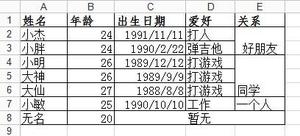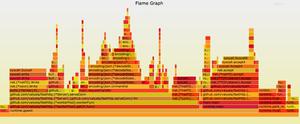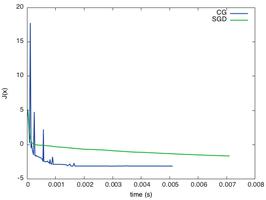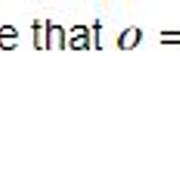pytorch制作自己的LMDB数据操作示例
本文实例讲述了pytorch制作自己的LMDB数据操作。分享给大家供大家参考,具体如下:
前言
记录下pytorch里如何使用lmdb的code,自用
制作部分的Code
code就是ASTER里数据制作部分的代码改了点,aster_train.txt里面就算图片的完整路径每行一个,图片同目录下有同名的txt,里面记着jpg的标签
import os
import lmdb # install lmdb by "pip install lmdb"
import cv2
import numpy as np
from tqdm import tqdm
import six
from PIL import Image
import scipy.io as sio
from tqdm import tqdm
import re
def checkImageIsValid(imageBin):
if imageBin is None:
return False
imageBuf = np.fromstring(imageBin, dtype=np.uint8)
img = cv2.imdecode(imageBuf, cv2.IMREAD_GRAYSCALE)
imgH, imgW = img.shape[0], img.shape[1]
if imgH * imgW == 0:
return False
return True
def writeCache(env, cache):
with env.begin(write=True) as txn:
for k, v in cache.items():
txn.put(k.encode(), v)
def _is_difficult(word):
assert isinstance(word, str)
return not re.match('^[\w]+$', word)
def createDataset(outputPath, imagePathList, labelList, lexiconList=None, checkValid=True):
"""
Create LMDB dataset for CRNN training.
ARGS:
outputPath : LMDB output path
imagePathList : list of image path
labelList : list of corresponding groundtruth texts
lexiconList : (optional) list of lexicon lists
checkValid : if true, check the validity of every image
"""
assert(len(imagePathList) == len(labelList))
nSamples = len(imagePathList)
env = lmdb.open(outputPath, map_size=1099511627776)#最大空间1048576GB
cache = {}
cnt = 1
for i in range(nSamples):
imagePath = imagePathList[i]
label = labelList[i]
if len(label) == 0:
continue
if not os.path.exists(imagePath):
print('%s does not exist' % imagePath)
continue
with open(imagePath, 'rb') as f:
imageBin = f.read()
if checkValid:
if not checkImageIsValid(imageBin):
print('%s is not a valid image' % imagePath)
continue
#数据库中都是二进制数据
imageKey = 'image-%09d' % cnt#9位数不足填零
labelKey = 'label-%09d' % cnt
cache[imageKey] = imageBin
cache[labelKey] = label.encode()
if lexiconList:
lexiconKey = 'lexicon-%09d' % cnt
cache[lexiconKey] = ' '.join(lexiconList[i])
if cnt % 1000 == 0:
writeCache(env, cache)
cache = {}
print('Written %d / %d' % (cnt, nSamples))
cnt += 1
nSamples = cnt-1
cache['num-samples'] = str(nSamples).encode()
writeCache(env, cache)
print('Created dataset with %d samples' % nSamples)
def get_sample_list(txt_path:str):
with open(txt_path,'r') as fr:
jpg_list=[x.strip() for x in fr.readlines() if os.path.exists(x.replace('.jpg','.txt').strip())]
txt_content_list=[]
for jpg in jpg_list:
label_path=jpg.replace('.jpg','.txt')
with open(label_path,'r') as fr:
try:
str_tmp=fr.readline()
except UnicodeDecodeError as e:
print(label_path)
raise(e)
txt_content_list.append(str_tmp.strip())
return jpg_list,txt_content_list
if __name__ == "__main__":
txt_path='/home/gpu-server/disk/disk1/NumberData/8NumberSample/aster_train.txt'
lmdb_output_path = '/home/gpu-server/project/aster/dataset/train'
imagePathList,labelList=get_sample_list(txt_path)
createDataset(lmdb_output_path, imagePathList, labelList)
读取部分
这里用的pytorch的dataloader,简单记录一下,人比较懒,代码就直接抄过来,不整理拆分了,重点看__getitem__
from __future__ import absolute_import
# import sys
# sys.path.append('./')
import os
# import moxing as mox
import pickle
from tqdm import tqdm
from PIL import Image, ImageFile
import numpy as np
import random
import cv2
import lmdb
import sys
import six
import torch
from torch.utils import data
from torch.utils.data import sampler
from torchvision import transforms
from lib.utils.labelmaps import get_vocabulary, labels2strs
from lib.utils import to_numpy
ImageFile.LOAD_TRUNCATED_IMAGES = True
from config import get_args
global_args = get_args(sys.argv[1:])
if global_args.run_on_remote:
import moxing as mox
#moxing是一个分布式的框架 跳过
class LmdbDataset(data.Dataset):
def __init__(self, root, voc_type, max_len, num_samples, transform=None):
super(LmdbDataset, self).__init__()
if global_args.run_on_remote:
dataset_name = os.path.basename(root)
data_cache_url = "/cache/%s" % dataset_name
if not os.path.exists(data_cache_url):
os.makedirs(data_cache_url)
if mox.file.exists(root):
mox.file.copy_parallel(root, data_cache_url)
else:
raise ValueError("%s not exists!" % root)
self.env = lmdb.open(data_cache_url, max_readers=32, readonly=True)
else:
self.env = lmdb.open(root, max_readers=32, readonly=True)
assert self.env is not None, "cannot create lmdb from %s" % root
self.txn = self.env.begin()
self.voc_type = voc_type
self.transform = transform
self.max_len = max_len
self.nSamples = int(self.txn.get(b"num-samples"))
self.nSamples = min(self.nSamples, num_samples)
assert voc_type in ['LOWERCASE', 'ALLCASES', 'ALLCASES_SYMBOLS','DIGITS']
self.EOS = 'EOS'
self.PADDING = 'PADDING'
self.UNKNOWN = 'UNKNOWN'
self.voc = get_vocabulary(voc_type, EOS=self.EOS, PADDING=self.PADDING, UNKNOWN=self.UNKNOWN)
self.char2id = dict(zip(self.voc, range(len(self.voc))))
self.id2char = dict(zip(range(len(self.voc)), self.voc))
self.rec_num_classes = len(self.voc)
self.lowercase = (voc_type == 'LOWERCASE')
def __len__(self):
return self.nSamples
def __getitem__(self, index):
assert index <= len(self), 'index range error'
index += 1
img_key = b'image-%09d' % index
imgbuf = self.txn.get(img_key)
#由于Image.open需要一个类文件对象 所以这里需要把二进制转为一个类文件对象
buf = six.BytesIO()
buf.write(imgbuf)
buf.seek(0)
try:
img = Image.open(buf).convert('RGB')
# img = Image.open(buf).convert('L')
# img = img.convert('RGB')
except IOError:
print('Corrupted image for %d' % index)
return self[index + 1]
# reconition labels
label_key = b'label-%09d' % index
word = self.txn.get(label_key).decode()
if self.lowercase:
word = word.lower()
## fill with the padding token
label = np.full((self.max_len,), self.char2id[self.PADDING], dtype=np.int)
label_list = []
for char in word:
if char in self.char2id:
label_list.append(self.char2id[char])
else:
## add the unknown token
print('{0} is out of vocabulary.'.format(char))
label_list.append(self.char2id[self.UNKNOWN])
## add a stop token
label_list = label_list + [self.char2id[self.EOS]]
assert len(label_list) <= self.max_len
label[:len(label_list)] = np.array(label_list)
if len(label) <= 0:
return self[index + 1]
# label length
label_len = len(label_list)
if self.transform is not None:
img = self.transform(img)
return img, label, label_len
更多关于Python相关内容可查看本站专题:《Python数学运算技巧总结》、《Python图片操作技巧总结》、《Python数据结构与算法教程》、《Python函数使用技巧总结》、《Python字符串操作技巧汇总》及《Python入门与进阶经典教程》
希望本文所述对大家Python程序设计有所帮助。
以上是 pytorch制作自己的LMDB数据操作示例 的全部内容, 来源链接: utcz.com/z/353773.html









